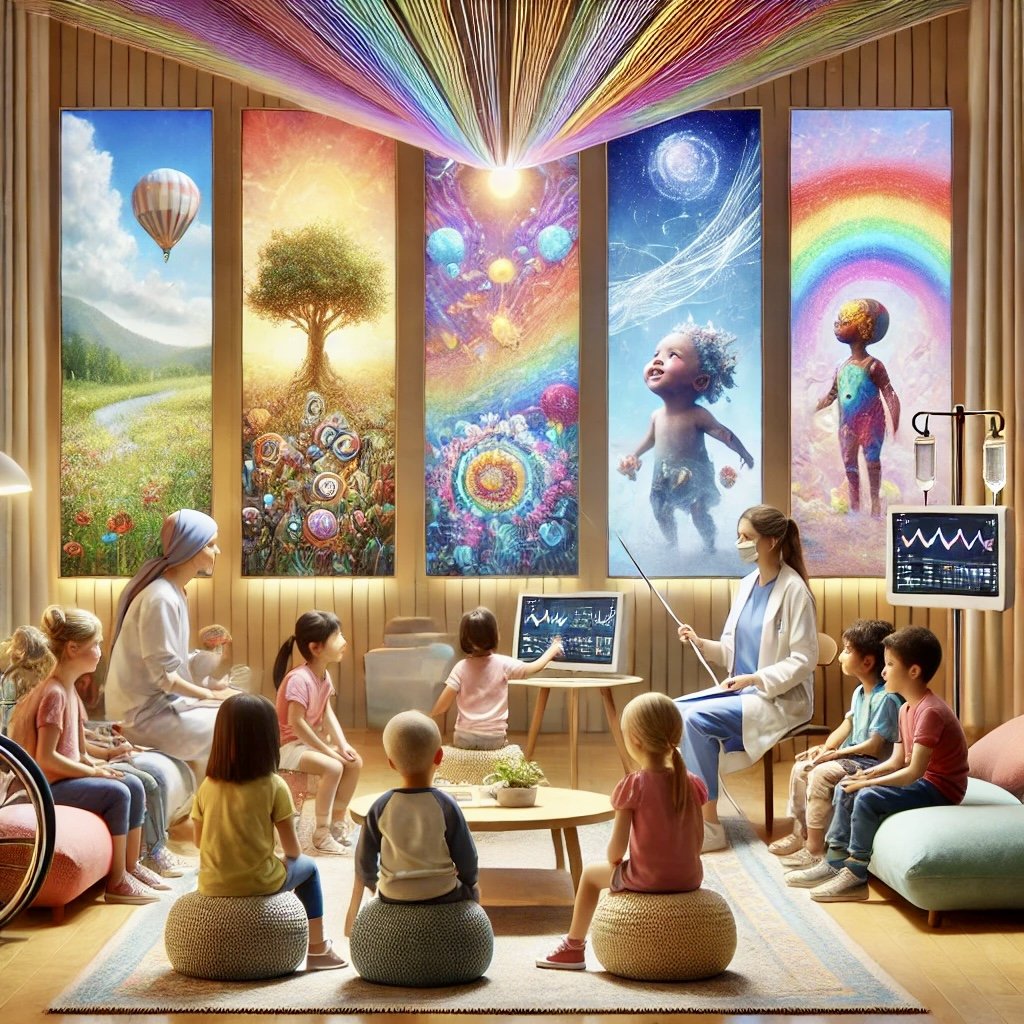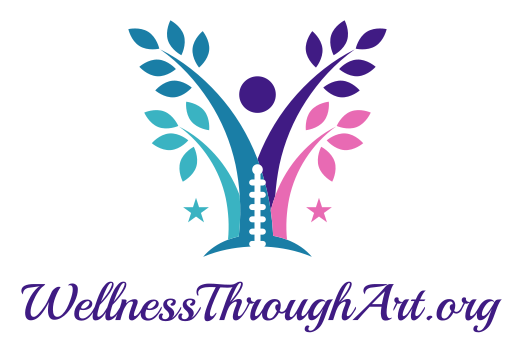
Research
The Healing Power of Art
Healing Through Art: A Path to Emotional Balance and Calm for Individuals in Need
Art is a powerful tool for emotional healing, especially for those facing challenges. Viewing and interacting with art provides a safe and comforting way for them to process complex emotions, offering a sense of relief from stress and anxiety. Experiencing art has been shown to help individuals relax, focus, and enhance their emotional well-being. In a world that can feel overwhelming, art offers them a sense of peace and control. The therapeutic power of art not only nurtures emotional balance but also fosters a deeper connection to oneself, bringing a profound sense of inner calm.
The Power of Art in Emotional Expression: How It Can Help to Cope
Art can be a powerful tool for emotional expression and healing. Art allows individuals to express feelings that might be hard to put into words. These creations can reflect their inner world, helping them process emotions like fear, sadness, or frustration, while also giving them a way to explore joy, hope, and resilience. Art can help release emotional tension and help to better understand feelings. At the same time, it offers others—like caregivers, family, and healthcare providers, a glimpse into the emotional journey, fostering deeper empathy and connection, which is crucial for emotional support.
How Viewing Art Can Boost Dopamine and Improve Emotional Well-Being
Viewing art can help individuals by activating the same brain pathways that boost dopamine signals, which are involved in controlling emotions, motivation, and feelings of reward. When someone engages with art, whether through creation or simply observing it, it can stimulate these dopamine pathways, providing feelings of pleasure and emotional relief. This can be particularly beneficial for in need, as the enhanced dopamine activity may improve their mood, reduce stress, and offer a sense of comfort during challenging times. Additionally, this process could help with motivation and positive thinking, both of which can be important in their recovery and well-being.
Energy Metabolites
The cell depends on key metabolites, such as ATP, amino acids, nucleotides, and lipids, for energy and synthesis of cellular structures. Serotonin, cortisol and dopamine hormones influence mood, stress response and other critical physiological functions. The production and regulation of serotonin, dopamine, and cortisol are intricately linked to the availability and metabolism of amino acids, lipid, and nucleotides. The holistic approaches to managing serotonin, dopamine, and cortisol often involve diet and lifestyle. Meditation and mindfulness have been shown to decrease stress. Viewing art can be a mindful and meditative experience. Engaging with art allows us to focus our attention, slow down, and become deeply present in the moment.
Focused Attention and Presence
• When we view art, we’re often drawn to details, colors, textures, shapes, and compositions. This act of focusing our attention on the piece, without judgment or distraction, aligns with mindfulness principles.
• Art invites us to slow down and look deeply, which encourages us to engage in what’s called “open monitoring” — a form of meditation where we remain receptive to sensory experiences without attachment. This can shift our awareness away from past and future concerns and toward the present moment.
2. Emotional Awareness and Reflection
• Art can evoke powerful emotions and memories, allowing us to explore feelings in a non-verbal way. As we recognize these emotions and sit with them mindfully, it can become a meditative practice.
• This introspective aspect of viewing art helps develop self-awareness and emotional resilience, similar to how mindfulness meditation encourages us to notice and observe our thoughts and emotions without reacting to them.
3. Engaging the Senses
• Being in an art gallery, museum, or studio can engage multiple senses (sight, sometimes touch, sound in multimedia art), providing a full-body experience that can center the mind.
• Mindfulness practices often use the senses as anchors for awareness, and art naturally invites us to use our senses in an immersive, enriching way.
4. Encourages a Non-Judgmental Approach
• Art encourages open-mindedness and the acceptance of different perspectives, mirroring the non-judgmental mindset essential to mindfulness. Rather than labeling an artwork as “good” or “bad,” viewing art mindfully means noticing and accepting it as it is, fostering a sense of curiosity.
5. Potential for Flow State
• When fully engaged with a work of art, some people enter a flow state, where they lose track of time and become fully absorbed. Flow is similar to meditation because it helps quiet mental chatter and brings complete immersion into the present activity.
6. Art Therapy and Healing
• Art therapy uses the process of creating and viewing art to support mental health, reduce stress, and improve emotional well-being. Studies have shown that both making and viewing art can reduce cortisol levels (a stress hormone) and increase positive feelings, showing its therapeutic and meditative benefits.
Variations of Art
1. Abstract Art:
Emotional Landscapes: Abstract paintings with bold colors and dynamic shapes can convey intense emotions like anger, joy, or confusion. For instance, swirling reds and oranges might depict fury or passion, while cool blues and greens could represent calm or sadness.
Expressionist Art: Works inspired by Expressionism often use distortion and exaggeration to reflect internal emotional experiences. This style can powerfully express feelings of anxiety, fear, or elation.
2. Symbolic Art:
Metaphorical Imagery: Art that uses symbols to represent emotions or psychological states, such as a stormy sea to convey turmoil or a peaceful landscape for tranquility.
Personal Symbols: Individuals might create art with personal symbols or imagery that reflect their own unique emotional experiences or challenges, such as a broken mirror to represent self-image issues.
3. Figurative Art:
Portraits of Emotions: Portraits that capture the nuanced expressions and body language of individuals, conveying emotions such as grief, happiness, or contemplation.
Scenes of Isolation or Connection: Artwork that depicts scenarios of loneliness or social interaction, illustrating feelings of isolation or the comfort of companionship.
4. Therapeutic Art Techniques:
Mandala Art: Creating mandalas can be a meditative and calming practice, helping to center and balance emotions. The repetitive and symmetrical patterns can symbolize wholeness and inner peace.
Collage Art: Collages using various materials and images can help individuals express complex emotions and explore their feelings through a mixed-media approach.
5. Art Reflecting Personal Journeys:
Healing Art: Artwork created during or after a period of personal struggle or trauma, showing the journey of recovery and growth. This might include visual representations of overcoming obstacles or personal transformation.
Joyful Creations: Art that celebrates positive experiences and milestones, such as achievements or joyful moments, reflecting personal growth and happiness.
6. Interactive Art:
• Art Therapy Sessions: Images of art therapy sessions where clients create art in response to prompts related to their emotions or life experiences, highlighting the process of emotional expression and therapeutic engagement.
